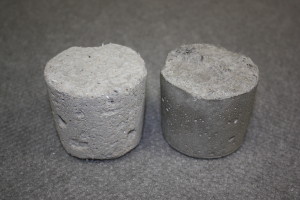The last post was about what makes gun safes different from fire safes or fire/burglary safes. So what are the differences between a fire safe and a fire/burglary safe?
Fire safes are geared toward protection against fire, but that is only for fire. These are the products you find at box stores. Many of these products are rated by Underwriters Laboratories for one or two hours. But the fire rating can be accomplished with paper thin steel or even plastic safe bodies. Better units may also be “drop tested”, in which they are dropped 30 feet onto concrete while still hot from the fire test. These safes may have good locks, but frequently the locks are very low security and made of plastic. Lock bolts are normal small, few in number and often made of pot metal.
Most fire safes are on the small side, made for residential use. Some commercial units, however, are up to 80 inches tall and wide enough to require two doors. These giants normally still have steel that is only about 14 gauge thick. The composite insulation in fire safes is usually relatively light-weight and is made to retain moisture.
Fire/burglary safes are obviously intended to keep burglars from breaking in, in addition to providing reasonable fire resistance. To enable the safe to stand up to drills, cutting tools and prying tools the steel is typically heavier – 11 gauge, 10 gauge or 3/16 are common. Lock bolts will be large and made of solid steel. The composite material is likely more dense, too. The denser material may contain stones or other things to make drilling more difficult, and these materials resist sledge hammers better. There is a trade-off, however, in that the denser composite is not as fire resistant as the lighter material. So when you get better burglary resistance, you probably only get 30 minutes, or a maximum 60 minutes of fire protection. Fire/burglary safes will always have good locks.
One picture above shows 14 gauge steel which is common on fire safes, compared to 10 gauge which is common on fire/burglary units — 10 Gauge is 80% thicker. The other picture shows samples of the two composite materials used by one safe manufacturer. The more effective fire insulation, left, weighs 0.5 pounds. The more burglary resistant material on the right weighs 1.5 pounds.
When looking for a safe think about what you want it to do. If you only want it to protect papers from fire, a unit from a box store may be OK. If you want it to provide security against theft, then get guidance from a knowledgeable safe dealer.


